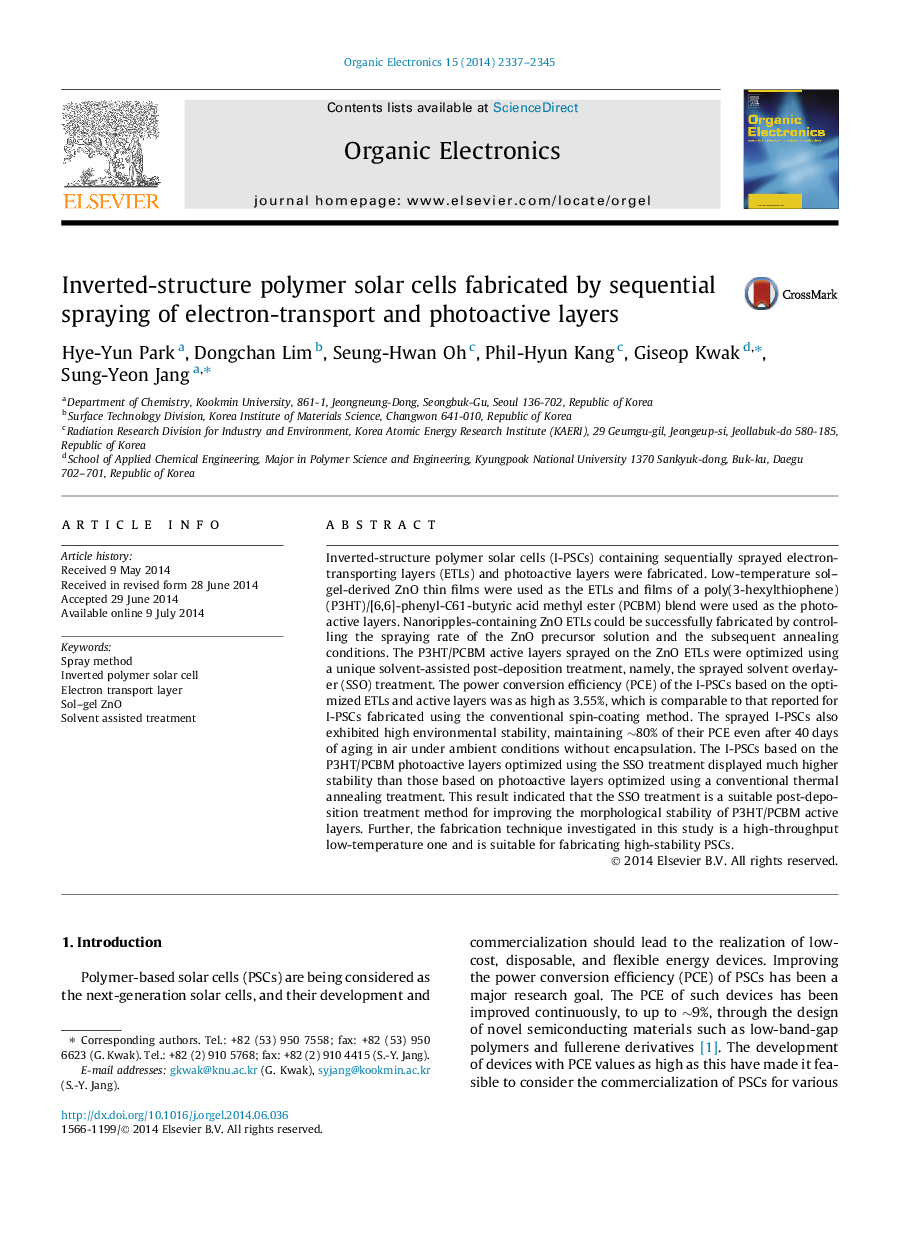| کد مقاله | کد نشریه | سال انتشار | مقاله انگلیسی | نسخه تمام متن |
|---|---|---|---|---|
| 1263769 | 972076 | 2014 | 9 صفحه PDF | دانلود رایگان |
• Inverted polymer solar cells (I-PSCs) were fabricated by spray technique.
• ZnO electron transporting layer (ETL) and P3HT/PCBM active layer were sequentially sprayed.
• Optimization of the sprayed ZnO ETLs and active layers were investigated.
• The efficiency and stability of the sprayed I-PSCs displayed comparable performance to the conventional spin-coated I-PSCs.
Inverted-structure polymer solar cells (I-PSCs) containing sequentially sprayed electron-transporting layers (ETLs) and photoactive layers were fabricated. Low-temperature sol–gel-derived ZnO thin films were used as the ETLs and films of a poly(3-hexylthiophene) (P3HT)/[6,6]-phenyl-C61-butyric acid methyl ester (PCBM) blend were used as the photoactive layers. Nanoripples-containing ZnO ETLs could be successfully fabricated by controlling the spraying rate of the ZnO precursor solution and the subsequent annealing conditions. The P3HT/PCBM active layers sprayed on the ZnO ETLs were optimized using a unique solvent-assisted post-deposition treatment, namely, the sprayed solvent overlayer (SSO) treatment. The power conversion efficiency (PCE) of the I-PSCs based on the optimized ETLs and active layers was as high as 3.55%, which is comparable to that reported for I-PSCs fabricated using the conventional spin-coating method. The sprayed I-PSCs also exhibited high environmental stability, maintaining ∼80% of their PCE even after 40 days of aging in air under ambient conditions without encapsulation. The I-PSCs based on the P3HT/PCBM photoactive layers optimized using the SSO treatment displayed much higher stability than those based on photoactive layers optimized using a conventional thermal annealing treatment. This result indicated that the SSO treatment is a suitable post-deposition treatment method for improving the morphological stability of P3HT/PCBM active layers. Further, the fabrication technique investigated in this study is a high-throughput low-temperature one and is suitable for fabricating high-stability PSCs.
Figure optionsDownload as PowerPoint slide
Journal: Organic Electronics - Volume 15, Issue 10, October 2014, Pages 2337–2345
